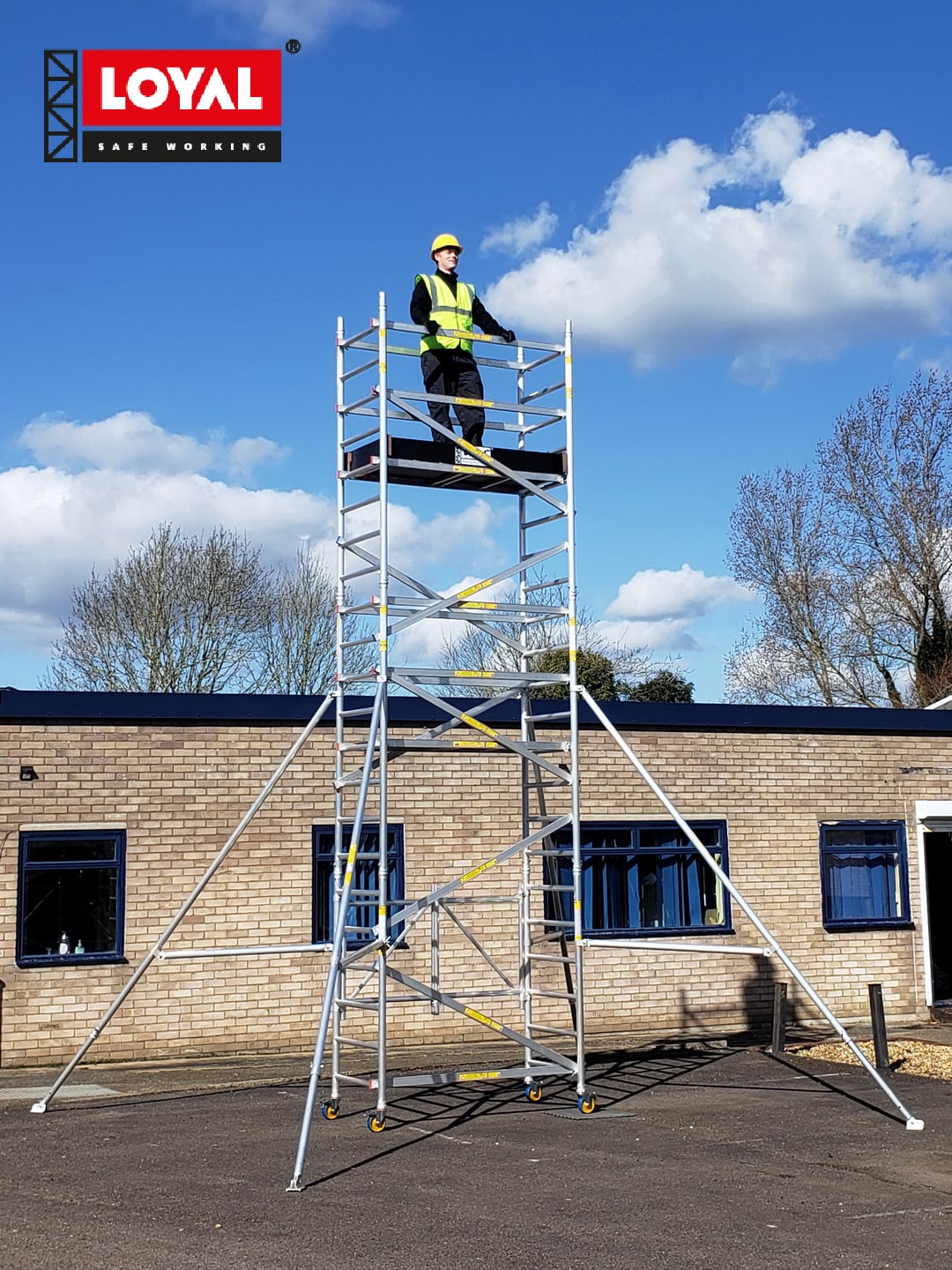No products in the basket.
Blog
What Is the Maximum Height for a Scaffold Tower in the UK? (2024)
Introduction
When planning a construction project—whether a DIY task or a large-scale commercial build—scaffold towers are essential for safe and efficient access at height. Understanding UK regulations and height limitations is crucial for both compliance and safety. This article explains the maximum scaffold tower heights, the relevant regulations, and best practices for safe usage.
In this guide, we’ll explore the key factors to consider when selecting a scaffold tower, from material choices and height requirements to safety features and cost considerations. By the end, you’ll have a clear understanding of how to find the perfect scaffold tower for your project.
We’ll break down height limits based on use case, location, design, and safety standards, including key UK regulations and manufacturer guidance.
Understanding Scaffold Towers
Scaffold towers are temporary structures used to support a work platform. They are ideal for elevated tasks such as painting, maintenance, and construction. Available in various sizes and configurations, they offer flexibility to suit different project needs.
Legal Regulations and Safety Standards
In the UK, scaffold towers must comply with several key regulations, including:
- 📜 The Work at Height Regulations 2005
Covers risk assessments, competent assembly, and user training for all work conducted at height. - 🏗️ Health and Safety Executive (HSE) – Tower Scaffolds
Focuses on preventing work-related deaths, injuries, and illnesses, and promotes a safe work culture. - ⚖️ Health and Safety at Work etc. Act 1974
Requires all work equipment, including scaffold towers, to be safe and properly maintained.
Scaffold Tower Height Limits
The height of a scaffold tower depends on several factors:
- 🏠 Indoor vs outdoor use
- 🏗️ Whether the tower is freestanding or tied
- ✅ Compliance with BS EN 1004:2020
1. Freestanding Towers
Indoor Use:
- 📏 Maximum platform height (2024): 12 metres
- ⚖️ Must be stabilised with outriggers or a wide base.
Outdoor Use:
- 📏 Maximum platform height (2024): 8 metres
- 🌬️ Exposure to wind requires stricter stability, even with outriggers.
Note: The UK no longer uses a fixed height-to-base-width ratio (e.g. the outdated 3:1 rule). Always follow BS EN 1004:2020 and the specific manufacturer’s guidance.
2. Tied Towers — Reaching Greater Heights Safely
When securely tied to a structure at recommended intervals, scaffold towers can exceed freestanding limits. Ties prevent swaying and improve resistance to wind loads.
- 🏢 Typically used in commercial or industrial settings
- 👷 Must be erected by competent professionals
This article does not cover tied towers in detail.
3. BS EN 1004:2020 Compliance
This standard governs mobile access towers and includes:
- 🏗️ Structural design and integrity
- 🛡️ Guardrails, toe boards, and platform access
- ⚖️ Stabiliser or outrigger requirements
- 📏 Maximum platform height based on application
Risk Assessment & Safety Requirements
Under the Work at Height Regulations 2005, employers must:
- 📋 Conduct thorough risk assessments
- 🛡️ Provide fall protection (e.g. guardrails, toe boards)
- 👀 Ensure correct tower erection, inspection, and use
- 🎓 Train workers in safe assembly and operation
Towers should be inspected before each use and assembled only by trained, competent individuals.
Key Factors Influencing Scaffold Tower Height
- ⚖️ Stability Measures:
Ties, outriggers, and diagonal braces enhance stability and enable greater height. - 🌬️ Wind and Weather Conditions:
Tall towers are vulnerable to wind. Reduce height or cease work during high winds. Debris netting may also be required. - 🏋️ Load Capacity:
Never exceed the tower’s rated load capacity, as this can lead to structural failure.
Engineered Solutions for Greater Heights
Custom scaffold towers may be required for:
- 📏 Heights beyond standard limits
- 🏗️ Irregular or complex structures
- 🏋️ Heavy-duty loading
Such systems are:
- 👨💻 Designed by engineers
- 🛠️ Made from reinforced materials
- ⚓ Stabilised with anchors, ties, or ballast
Practical Tips for Working at Height
- ✅ Choose the correct tower type for your environment.
- ⚖️ Use outriggers or stabilisers where specified.
- 🛡️ Always fit guardrails and toe boards.
- 🚫 Never exceed manufacturer height or weight limits.
- 👀 Inspect the tower before each use.
- 🎓 Train all workers thoroughly.
- 🔧 Secure tools to prevent falling objects.
Platform Height vs Working Height
- 📏 Platform Height: Distance from the ground to the working platform.
- 📐 Working Height: Platform height plus approximately 2 metres (to account for user height and reach).
E.g. A 5-metre platform provides a working height of around 7 metres.
Moving a Scaffold Tower Safely
You can move a scaffold tower safely only when:
- 👤 The tower is unoccupied.
- 🧰 All tools and materials are removed from the platform.
- 📉 The height is reduced to within safe limits and outriggers/stabilisers (if fitted) are removed.
- 🌱 The ground is firm, level, and free from obstacles.
- 🔄 The castors are unlocked and designed for tower mobility.
- 🌬️ Wind conditions are calm.
- 👥 The tower is moved by at least two people from the base—one guiding, one pushing.
Always inspect the tower again before resuming work.
Conclusion: What’s the Maximum Scaffold Tower Height in the UK? (2024)
| Type | Max Platform Height |
|---|---|
| Indoor Freestanding | 12 metres |
| Outdoor Freestanding | 8 metres |
Always consult manufacturer guidance and comply with UK safety standards such as BS EN 1004:2020 and the Work at Height Regulations 2005. For particularly high or complex installations, consult a qualified scaffolding engineer.
Safety first—never compromise when working at height.
Note: Regulations may change over time. This article offers guidance only. Always verify current laws and standards before starting a project.
Need a safe, reliable scaffold tower?
Visit Aluminium Scaffold Towers for a wide range of BS EN 1004:2020-compliant towers suitable for all access needs.
Further reading:
Explore more towers at Aluminium Scaffold Towers UK.
Understand safety markings: Tower Safety Markings Explained.
Scaffold Towers UK: Complete Guide to Types, Applications & Safety (2024)






